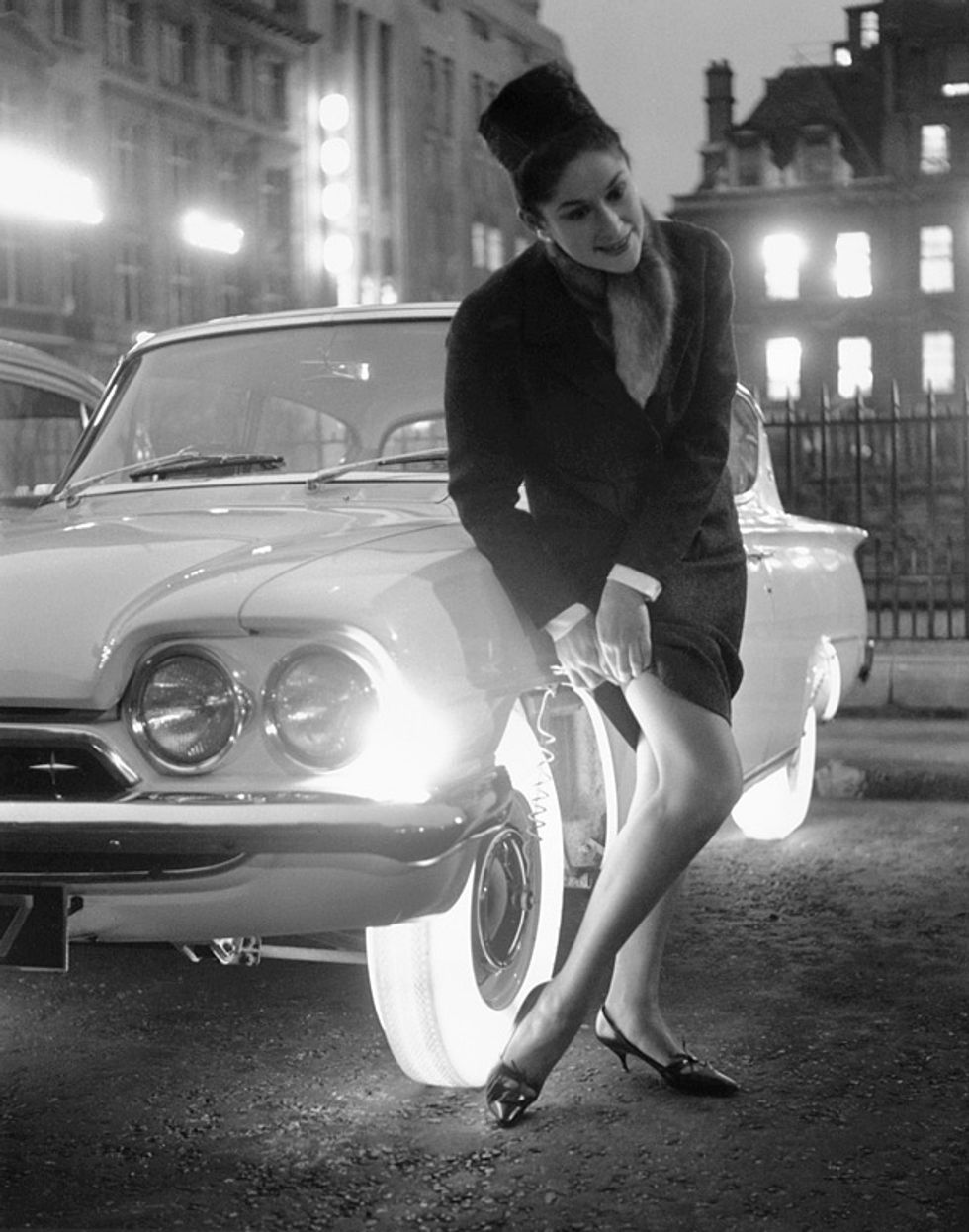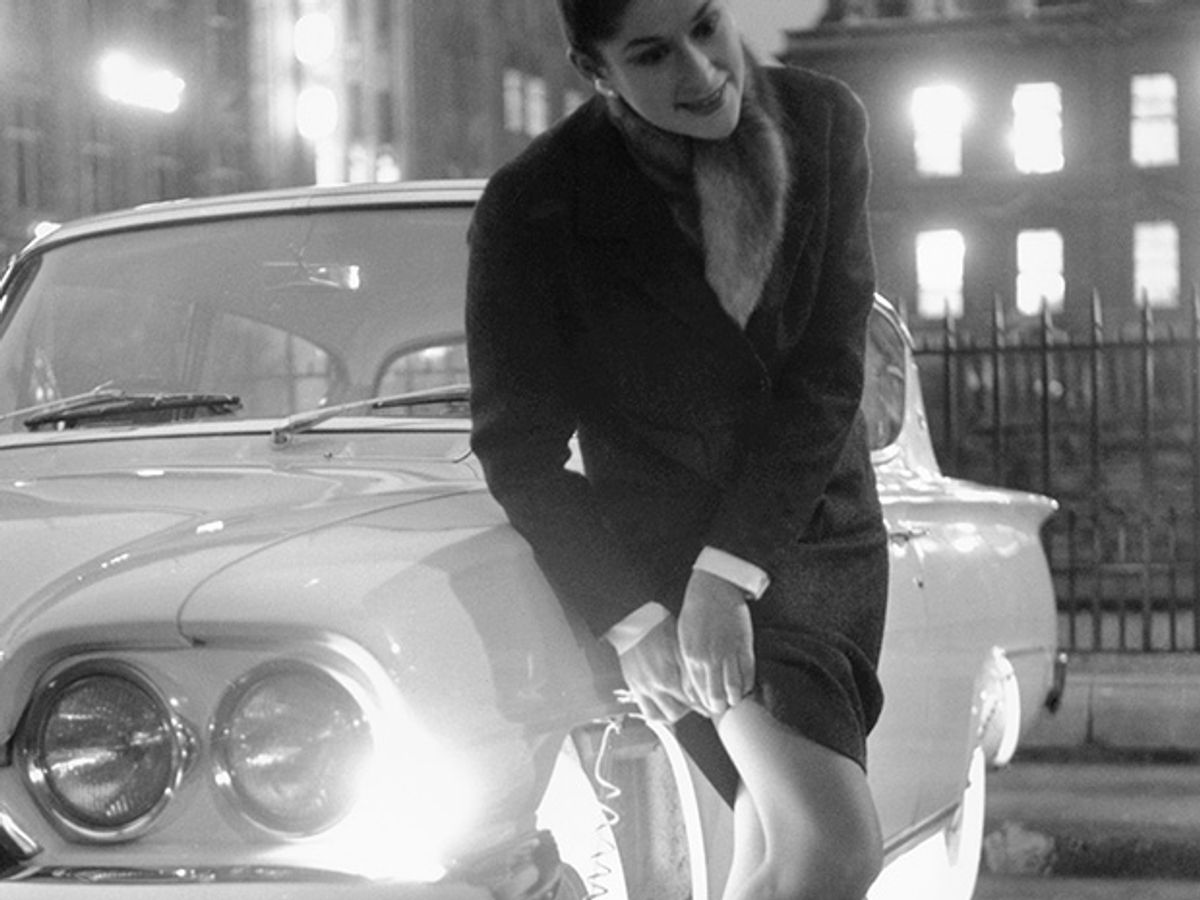
In the early 1960s, Goodyear revealed “one of the most dramatic tire developments in the history of the industry,” according to the company’s newsletter. It was a tire made of Neothane, a synthetic polyurethane rubber that could be poured into tire-shaped molds and baked in a 250 °F (121 °C) oven. Neothane tires were much easier to produce than traditional tires, which required multiple layers of rubber and fabric. The superior material, claimed Goodyear, combined the hardness of plastic with the resilience of rubber and offered “outstanding resistance to abrasive wear, chipping, cutting, and tearing.”
A side benefit of Neothane was that it was translucent. Goodyear took advantage of this feature by adding dye to the rubber, resulting in a range of bright hues, including green, yellow, red, orange, and blue. When the tires were mounted on rims that had 18 tiny lightbulbs inside, they produced a vivid glow at night. In a 1961 press release, the company predicted a new era of fashion-forward automobiles:
“Once the tires reach the market—and that could happen in a few years—auto stylists may use them to carry out a car’s color scheme, perhaps matching the tires with the upholstery. And it’s not at all unlikely that milady will want tires that enhance her wardrobe, her hair, or even her eyes.
Imagine, if you will, one girl telling another: ‘But, my dear, green tires just don’t do a thing for your complexion.’
When that day comes, it will mean a whole new frontier for the tire designer.”
On a more practical level, the driver could control the illumination of the tires individually or in pairs from a panel mounted near the car’s steering wheel, allowing the tires to be used as turn signals or brake lights.
Initial testing showed that the Neothane tires rode smoothly and quietly. But they didn’t perform well in wet weather and melted under heavy braking. Other drivers found them distracting, according to Life magazine: “Motorists have been so enthralled by the pretty colors that they have gone through red lights or just stopped to stare.”
Although Goodyear promised that additional refinement would make the tires much more durable than traditional tires, ultimately Neothane tires proved too expensive to produce commercially. Goodyear was forced to abandon the project, leaving us with only one option to match our outfits with our tires: wearing black.
This article appears in the March 2017 print issue as “When Form Exceeded Function.”
Part of a continuing series looking at old photographs that embrace the boundless potential of technology, with unintentionally hilarious effect.
Evan Ackerman is a senior editor at IEEE Spectrum. Since 2007, he has written over 6,000 articles on robotics and technology. He has a degree in Martian geology and is excellent at playing bagpipes.



